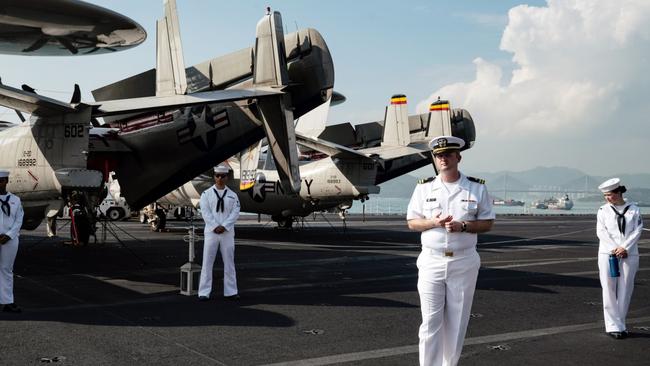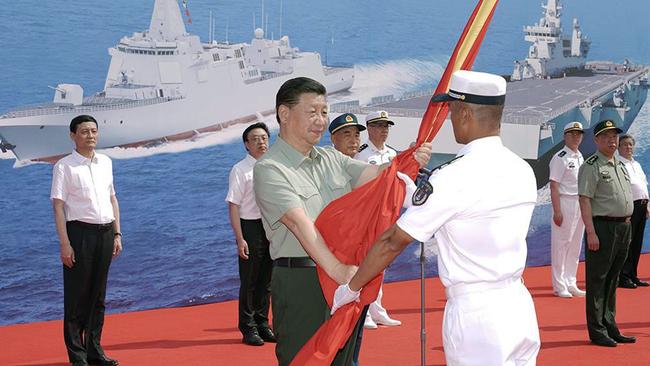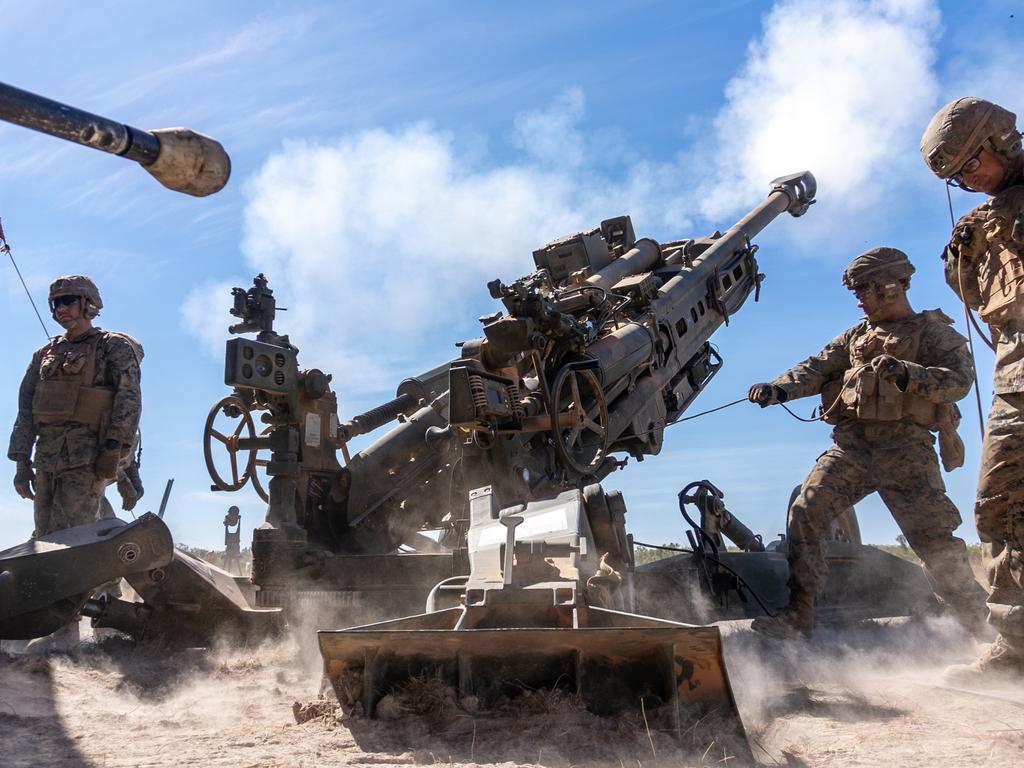America’s naval strategy is at sea
The US Navy is at sea, figuratively as well as literally. It has 101 ships deployed around the world — the same number as during the Cold War — yet the entire fleet is only 297 vessels strong. That’s about half the Reagan-era level of nearly 600. The consequences of maintaining current global commitments with a shrunken fleet include long deployments — some sailors spend close to a year at sea — as well as more maintenance and less time for training.
The figurative sense in which the Navy is at sea is more important and more dangerous. The fleet doesn’t have enough ships to meet global commitments, even as the US faces growing naval competition from China, Russia, Iran and North Korea. Each of these potential adversaries possesses missiles and aircraft whose sole purpose is to keep US naval forces at bay. Sixty-four percent of China’s maritime trade and 40 per cent of its overall trade flows through the South China Sea, through which US naval ships sail regularly.

Were hostilities to break out between China and the US, the conflict would be a naval one. It would test the US ability to move naval and amphibious forces across the 7,000-mile Pacific moat in time to assist American allies and partners, deny China’s use of the shipping lanes between it and the Middle East, and operate effectively to command the South China, East China and Yellow seas. The Chinese Navy would be a formidable foe. It has long-range missiles, a nascent aircraft-carrier force and increasingly modern ships and weapons of all categories, as well as cyber and space capabilities.

Simply building more US ships and submarines wouldn’t be enough to meet the challenge. Strategic thinking and a change in fleet design and tactics will be necessary. In the 1930s, the Navy and Marine Corps identified Japan as a likely future enemy and developed — and practised — the ideas of naval aviation and island-hopping that eventually won the Pacific War.
On Dec. 17 then-Navy Secretary Kenneth Braithwaite released a document billed as a “tri-service maritime strategy.” Signed by the chiefs of the Navy, Marine Corps and Coast Guard, “Advantage at Sea” correctly identifies China as a “pressing, long-term threat” and calls for traditional — and important — actions such as integrated operations, allied participation, modernization and sea control. But it isn’t a maritime strategy. It offers no suggestions about how to win a naval war against China.
Nothing prevents the Pentagon from articulating a strategy. During the Cold War, the US Maritime Strategy told everyone from Congress to the Kremlin that in the event of war the US Navy would target the enemy’s ballistic-missile submarine bastions and divert Soviet concentration from the central front in Germany by striking its oceanic flanks from the northern seas to the Mediterranean to the Pacific. The Navy used the strategy’s stated goals to argue for the funds to build an enlarged fleet, the cold-water training needed to prepare for conflict in northern seas, and the composition of aircraft carriers’ air wings.
No similar strategy exists today, partly because the Navy hasn’t made it a priority to produce one and partly because turf battles have impeded the interbranch cooperation necessary to make it happen. In a May 1954 article in Proceedings, the US Naval Institute’s magazine, Samuel Huntington argued that the military services must have a “strategic concept,” which he described as “a description of how, when and where the military expects to protect the nation … If a military service does not possess such a concept, it becomes purposeless.” Nothing has changed. Legislation passed in the 1980s placed greater emphasis on coordination between the military services. It didn’t absolve the military services of their obligation to articulate a strategy.
China has a straightforward strategy: Keep the US Navy from using its formidable capabilities to support allies and disrupt the regional — and eventually global — hegemony that China’s rulers seek. The US Navy is caught up in all the derivative issues that a clear strategy would address such as budgets, training, ship numbers and fleet composition. We have no maritime strategy for a conflict that would be waged at sea. There is no more important issue facing the American military.
Mr Cropsey is director of the Hudson Institute’s Center for American Seapower. He served as a naval officer and was a deputy undersecretary of the Navy in the Reagan and George H.W. Bush administrations.
The Wall Street Journal
More Coverage
Read related topics:China Ties






